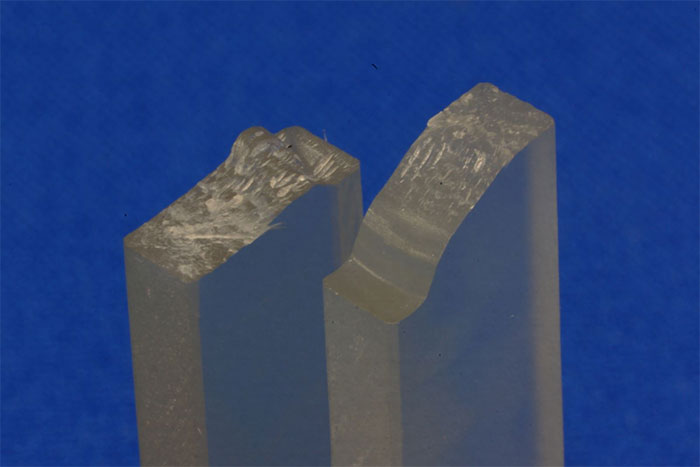Successfully developed bioplastics suitable for industrial production
A group of Japanese researchers on April 10 announced that they had developed a new type of bioplastic that is not only durable but also decomposes quickly in seawater and can be mass produced.
According to a report published in the American scientific journal ACS Sustainable Chemistry and Engineering, scientists at Kobe University and a number of other organizations have discovered a new type of bioplastic made from polylactic acid (PLA) , a type of bioplastic. polyester is derived from starches such as sugarcane and corn.

The new bioplastic is made from polylactic acid. (Photo: kobe-u.ac.jp)
Polylactic acid, also known as polylactide , has attracted attention as an alternative to petroleum-based plastics, but the material is brittle and difficult to mold and dissolve. Scientists then developed a biodegradable polylactide called LAHB , but it is difficult to mass produce. To overcome those limitations, the team used a type of bacteria called lactate dehydrogenase that is capable of producing plastic, and through genetic modification, the team was able to mass-produce LAHB.
LAHB itself is opaque white, but the research team developed the new resin that achieves the typical transparent appearance by adding a small amount of LAHB to regular polylactic acid.
The Japanese government hopes to increase the country's bioplastic usage rate to about 2 million tons by 2030.
This new discovery brings hope to the prospect of solving the problem of plastic waste in the world's oceans. According to the Organization for Economic Cooperation and Development (OECD), by 2022, there will be about 30 million tons of plastic waste in the sea.
Professor Seiichi Taguchi of Kobe University, a member of the research team, assessed that the development of new bioplastics will help prevent global warming and promote industrial production of biological products like this.
- Production of bioplastics from renewable sources
- Successful production of seed crabs with industrial feed
- The 16-year-old turned the banana peel into plastic
- Use industrial feed for commercial snakehead fish
- Production of aircraft fuel from industrial emissions
- Unexpected effect of cooking oil on industrial food production equipment
- Taiwan successfully developed multicolored rice
- Producing chemicals and biofuels from wood biomass
- Learn about nanotechnology in industrial production
- Banana trees become a renewable source of bioplastics
- Turn coffee grounds, sugarcane bagasse into... plant pots, chess sets
- Food experts advise you not to eat the following 6 dishes
 Is the magnetic North Pole shift dangerous to humanity?
Is the magnetic North Pole shift dangerous to humanity? Washington legalizes the recycling of human bodies into fertilizer
Washington legalizes the recycling of human bodies into fertilizer Lightning stone - the mysterious guest
Lightning stone - the mysterious guest Stunned by the mysterious sunset, strange appearance
Stunned by the mysterious sunset, strange appearance